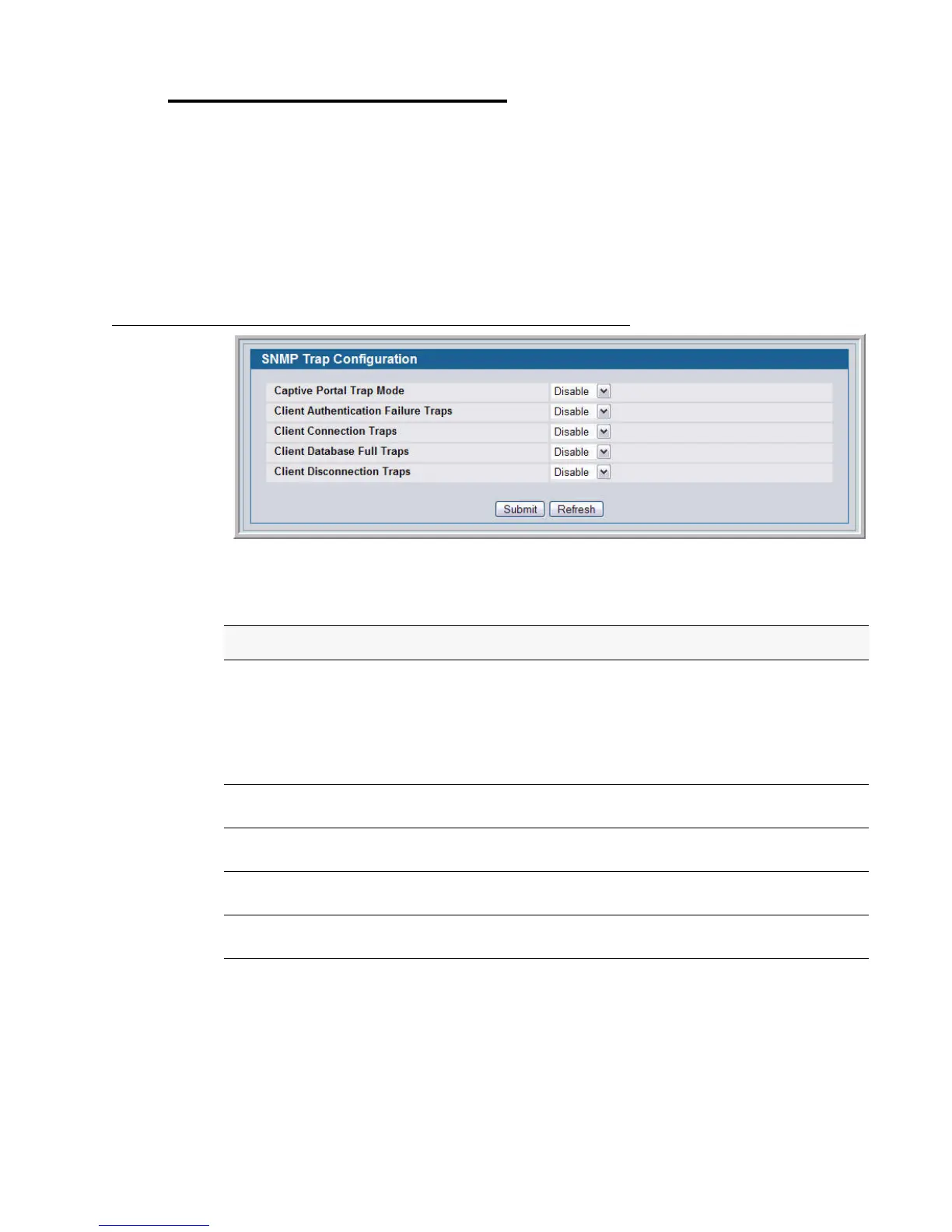SNMP Trap Configuration 187
9 Configuring the Captive Portal
SNMP Trap Configuration
Use the SNMP Trap Configuration page to configure whether or not SNMP traps are sent
from the Captive Portal and to specify captive portal events that will generate a trap.
All CP SNMP traps are disabled by default.
To configure SNMP trap settings for various captive portal features, click Security > Captive
Portal > SNMP Trap Configuration.
Figure 92. SNMP Trap Configuration
Table 73 describes the events that generate SNMP traps when the status is Enabled.
Table 73. SNMP Trap Configuration
Field Description
Captive Portal Trap
Mode
Choose one of the following captive portal trap modes:
• Select Enable to allow the SNMP agent on the switch to generate
captive portal SNMP traps that are enabled.
• Select Disable to prevent the SNMP agent on the switch from
generating any captive portal SNMP traps, even if they are
individually enabled.
Client Authentication
Failure Traps
If you enable this field, the SNMP agent sends a trap when a client
attempts to authenticate with a captive portal but is unsuccessful.
Client Connection
Traps
If you enable this field, the SNMP agent sends a trap when a client
authenticates with and connects to a captive portal.
Client Database Full
Traps
If you enable this field, the SNMP agent sends a trap each time an entry
cannot be added to the client database because it is full.
Client Disconnection
Traps
If you enable this field, the SNMP agent sends a trap when a client
disconnects from a captive portal.
